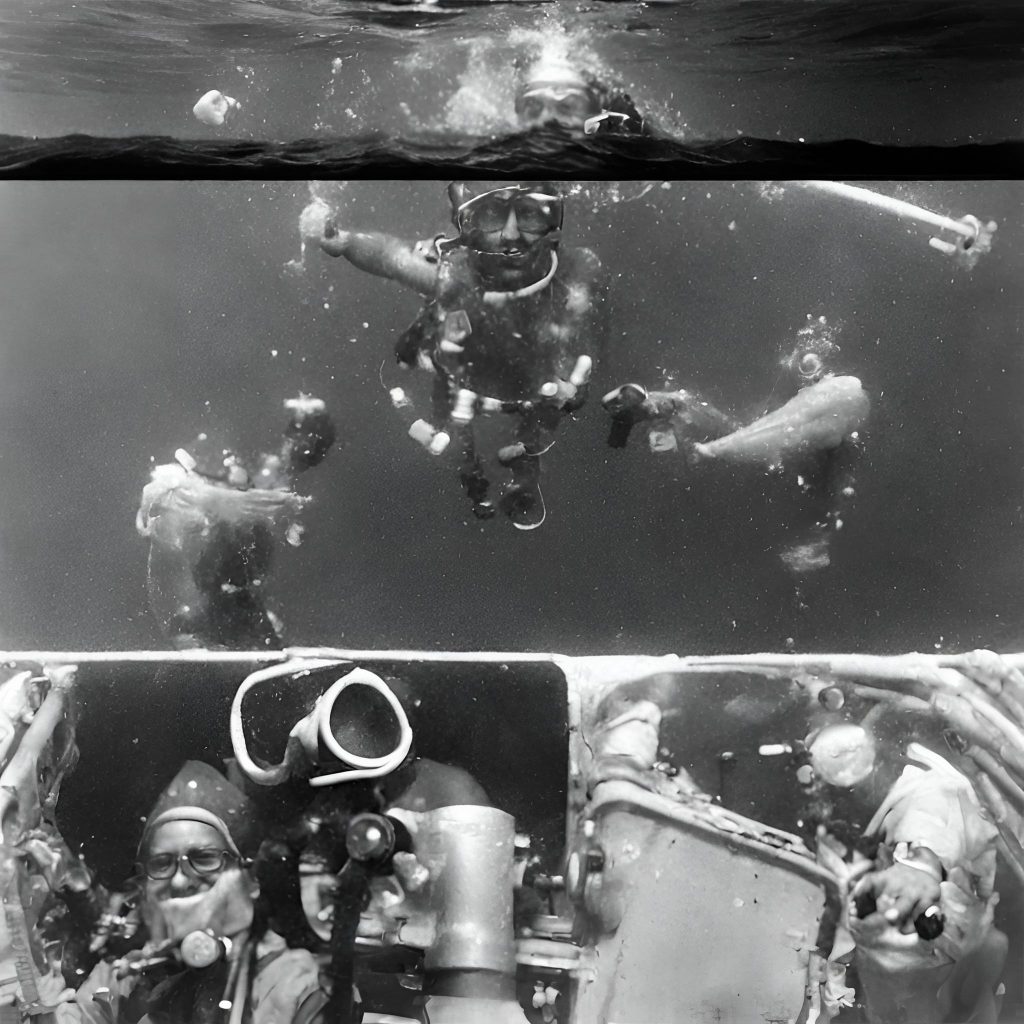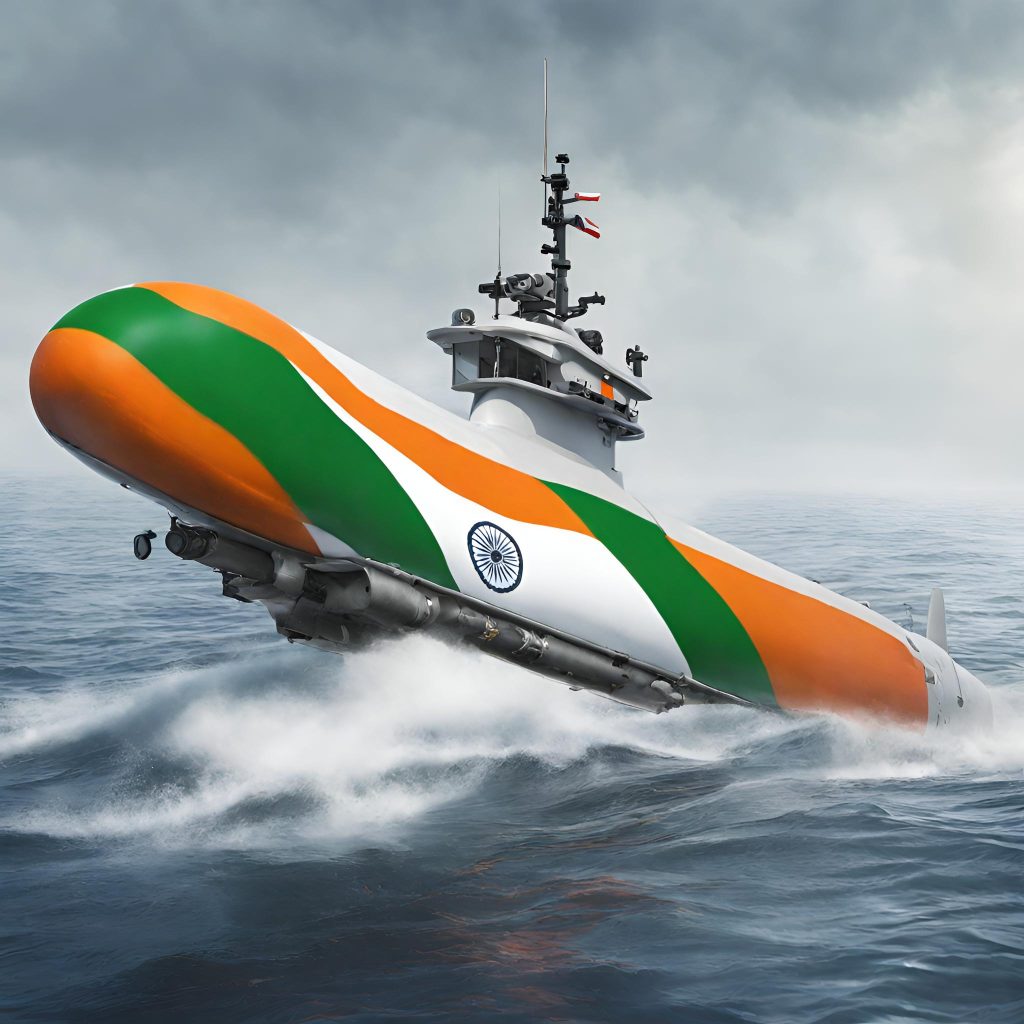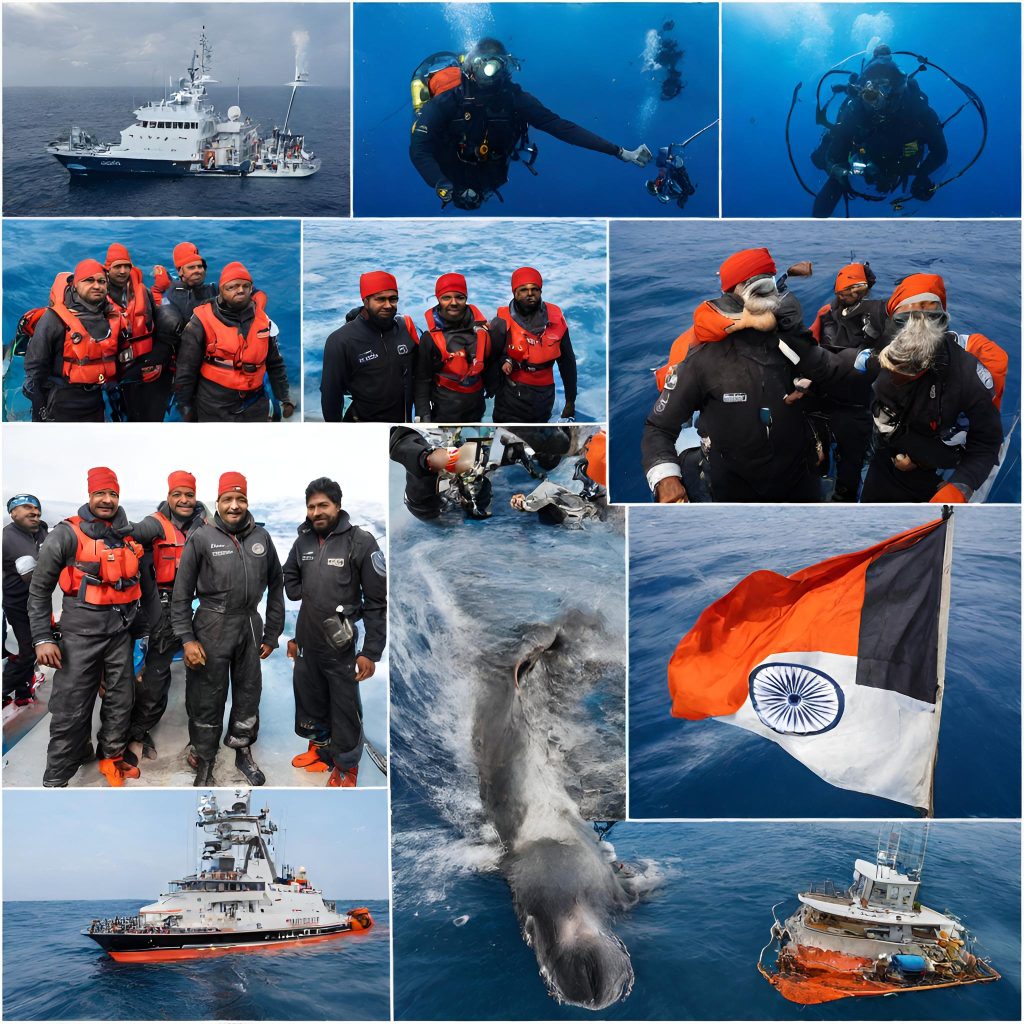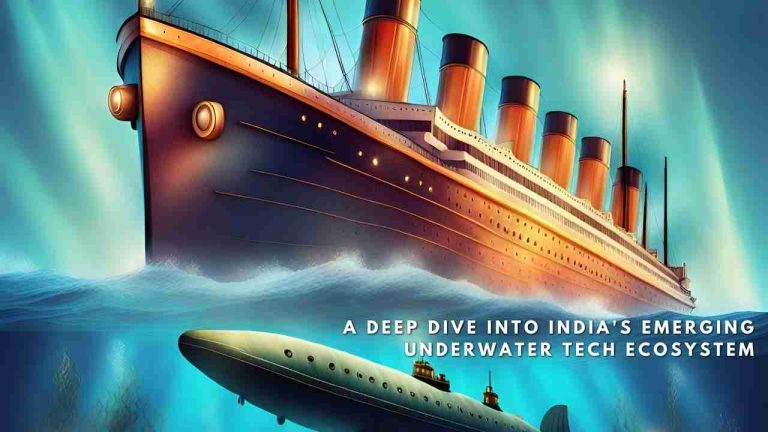The allure of the Titanic, a leviathan frozen in time beneath the icy Atlantic, is undeniable. Its tragic maiden voyage and the haunting beauty of its watery grave have captivated imaginations for over a century. However, the recent “Titan” underwater expedition served as a stark reminder of the precarious balance between technological marvel and potential peril when venturing into the unforgiving depths.
Critical Bottlenecks that Surfaced:
- Untested Technology: The “Titan” expedition employed a novel submersible with cutting-edge features like AI-powered piloting and 360-degree virtual reality experiences. While innovative, these untested systems faced unforeseen challenges in the real-world environment, contributing to navigation difficulties and ultimately, the submersible’s unfortunate demise.
- Communication Blackouts: Reliable communication with the surface proved problematic due to the depth and complex terrain. The submersible’s primary link failed, leaving the crew reliant on less robust backups, hindering critical communication and decision-making during the incident.
- Environmental Miscalculations: Underestimating the power of deep-sea currents and the fragility of the Titanic’s decaying structure proved costly. The submersible was caught in a powerful undertow, leading to collision and catastrophic damage.
Charting a Safer Course: Tech Solutions for Secure Underwater Tourism:

- Adequate Sonar Technology: Future expeditions should invest in state-of-the-art sonar systems, integrating artificial intelligence algorithms for precise mapping and obstacle avoidance. Enhanced real-time data processing will be crucial for navigating complex underwater environments, ensuring a safer exploration experience.
- Reliable communication systems:Develop robust communication systems leveraging satellite technology to maintain seamless connectivity during underwater expeditions. Implement redundancies and backup systems to ensure continuous communication, reducing the risk of isolation and enhancing emergency response capabilities.
- Advanced collision avoidance systems: Integrate advanced collision avoidance systems, such as LiDAR and computer vision, into underwater vehicles. These technologies can provide real-time detection of obstacles, enabling autonomous or assisted navigation to prevent collisions and safeguard both the exploration vessel and historical artifacts.
- Comprehensive emergency response protocols:Implement comprehensive emergency response protocols, including regular drills, advanced training for expedition personnel, and the incorporation of robotic systems designed for rapid response and damage mitigation. These measures will enhance the overall safety net for underwater exploration missions.
India’s Underwater Blind Spot: Why Innovation for Safe Ocean Exploration Lacks Depth
India, a land blessed with a 7,517 km coastline, the seventh longest in the world, seems curiously absent from the global conversation about innovative solutions for safe and sustainable underwater exploration. This is despite the immense potential offered by its vast aquatic territory, a treasure trove of marine biodiversity and historical shipwrecks. So, why are Indian companies failing to dive into this technological frontier, while others are making waves?
Reasons for the Deep Dive Deficit:
- Risk Averse Culture: Indian businesses, in general, tend to be risk-averse, hesitant to invest in unproven technologies or ventures with long payback periods. The high upfront costs and uncertain returns associated with underwater technology development can be a major deterrent.
- Limited Research & Development: India’s R&D spending, at 0.68% of GDP, lags far behind global leaders like South Korea (4.19%) and Israel (4.31%). This lack of investment translates into a dearth of skilled researchers and engineers specializing in ocean technology.
- Fragmented Ecosystem: The Indian ocean technology sector is fragmented, with players operating in silos. Collaboration between industry, academia, and government research institutions is often limited, hindering knowledge sharing and innovation.
- Bureaucratic Bottlenecks: Navigating India’s complex regulatory landscape can be a major hurdle for startups and small businesses. Obtaining permits and approvals for underwater research and development projects can be a time-consuming and frustrating process.
- Focus on Land-based Challenges: India faces pressing challenges on land, from poverty and healthcare to infrastructure and education. These issues understandably take priority in policy and resource allocation, leaving ocean technology on the back burner.
Breaking the Surface:
Despite these challenges, there are glimmers of hope. A nascent ecosystem of ocean tech startups is emerging, driven by passionate entrepreneurs and fueled by growing investor interest. Government initiatives like the Ministry of Earth Sciences’ Deep Ocean Mission aim to boost research and development in this field.
Here are some ways to propel India’s underwater tech innovation:
- Foster a Culture of Risk-Taking: Encourage entrepreneurship and provide seed funding for promising ocean tech ventures. Highlight the potential economic and environmental benefits of a thriving underwater economy.
- Bridge the Research Gap: Increase investment in R&D infrastructure and incentivize collaboration between universities, research institutions, and private companies. Focus on developing skilled personnel in ocean engineering, marine biology, and robotics.
- Streamline Regulations: Simplify the permitting process for underwater research and development projects. Establish clear regulations that balance safety and innovation.
- Leverage India’s Strengths: Capitalize on India’s existing strengths in IT, software development, and satellite technology to develop cost-effective underwater solutions.
- Raise Public Awareness: Generate public interest and excitement about the potential of ocean technology. Showcase success stories and highlight the environmental importance of responsible ocean exploration.
By addressing these challenges and capitalizing on its unique strengths, India can transform its vast coastline from a passive resource into a hotbed of innovation, shaping the future of safe and sustainable underwater exploration. Remember, the ocean holds the key to unlocking new frontiers of scientific discovery, economic prosperity, and environmental conservation. It’s time for India to take the plunge.

Let’s make India a leader in not just land-based innovation, but also in unlocking the secrets and potential of the deep blue.
Tech Trailblazers
India’s presence in underwater expedition solutions is still nascent, several promising companies are making waves in different aspects of the field. Here’s a list of some noteworthy players, categorized by their focus:
Autonomous Underwater Vehicles (AUVs):
- Deep Ocean Engineering (Chennai): Pioneers in AUV design and development, with models like DIVE and MAYA used for underwater surveys, inspections, and research.
- Techshore Robotics (Mumbai): Develops cost-effective, modular AUVs for various applications, including hydrographic surveys, pipeline inspection, and aquaculture monitoring.
- Aqualife Robotics (Goa): Focuses on underwater drones for marine research, inspection, and conservation projects.
Sensors and Communication Systems:
- TechMahindra (Mumbai): Offers integrated solutions for underwater communication, including acoustic modems, transponders, and network management systems.
- Wipro (Bangalore): Develops underwater sensor networks and data analytics platforms for various applications, including offshore oil and gas exploration.
Subsea Robotics and Manipulators:
- Oceaneos Technologies (Ernakulam): Designs and manufactures subsea robotic arms and underwater manipulators for inspection, maintenance, and intervention tasks.
- NLRD (Visakhapatnam): A public sector undertaking developing deep-sea submersibles and underwater robotic systems for research and defense applications.
- Roboteam India (Chennai): Offers tethered and untethered underwater robots for inspection, cleaning, and maintenance of offshore structures and vessels.
Software and Data Analytics:
- GeoKavach (Chennai): Develops underwater mapping and visualization software for AUV missions, offering 3D reconstruction and data analysis capabilities.
- Mantra Software (Mumbai): Provides marine data management and analysis solutions for various industries, including oceanographic research, offshore operations, and port management.
- Infosys (Bangalore): Offers expertise in developing IoT and AI-powered solutions for underwater monitoring, analytics, and predictive maintenance.
Emerging Innovation:
- MarineSense (Kerala): Developing intelligent fish farms equipped with underwater sensors and AI-powered data analysis for sustainable aquaculture.
- OceanQuest International (Mumbai): Pioneering underwater virtual reality experiences, bringing the ocean depths to life in a safe and immersive environment.
- Sea-Drone Technology (Chennai): Offers autonomous underwater drones for seabed cleaning and microplastic collection, promoting ocean health and sustainability.
These are just a few examples, and the Indian underwater technology landscape is constantly evolving. While challenges remain, the growing interest and potential of this sector, along with the dedication of these innovative companies, offer a promising future for India’s role in shaping the future of underwater exploration.
Conclusion: Igniting Innovation – A Collaborative Future for India’s Underwater Odyssey
While India’s potential in underwater expedition solutions is undeniable, the journey requires both internal drive and external collaboration. To truly unleash the fire within its brilliant minds, the government must act as a catalyst, fostering a collaborative platform between emerging Indian tech companies and the established forerunners from developed nations.
Knowledge sharing is the key that unlocks the treasure trove of innovation. By bridging the information gap, Indian companies can gain access to cutting-edge technologies, best practices, and expertise in areas like:
- Advanced materials and robotics: Develop lighter, stronger, and more efficient underwater vehicles and tools.
- AI-powered data analysis and machine learning: Gain deeper insights from sensor data, optimize operations, and predict potential challenges.
- Subsea communication and navigation: Ensure reliable and secure communication channels and precise positioning under extreme conditions.
- Sustainable practices and environmental impact mitigation: Balance exploration with responsible resource management and conservation efforts.
This collaboration is not a one-way street. Indian companies bring their own strengths to the table, including:
- Cost-effective solutions: Indian ingenuity can adapt advanced technologies for broader accessibility and affordability.
- Domain expertise: Local knowledge of India’s unique underwater environments can add crucial context and nuance to research and development.
- Agile and nimble development: Indian startups can quickly adapt and iterate on solutions, bringing fresh perspectives to established methods.
By building this collaborative platform, the government can:

- Establish joint research and development partnerships: Facilitate joint projects between Indian and foreign companies, fostering knowledge exchange and cross-cultural learning.
- Create incentive programs: Encourage technology transfer and knowledge sharing through financial grants, tax breaks, and intellectual property collaboration agreements.
- Organize workshops and conferences: Bridge the gap between academia, industry, and government through events that promote knowledge sharing and networking.
- Streamline bureaucratic hurdles: Simplify regulations and expedite permitting processes to incentivize foreign companies to work in India.
The ocean holds unexplored riches, and India has the potential to be a global leader in unlocking its secrets. By nurturing its nascent underwater tech ecosystem through international collaboration, India can turn its vast coastline from a passive resource into a powerhouse of innovation. Remember, a small spark in these brilliant minds, fueled by global knowledge exchange, can ignite a fire that illuminates the depths of possibility. Let’s empower India’s underwater odyssey by fostering a collaborative platform that propels it to the forefront of this exciting frontier.
Add-on Insights: Global Innovators Diving Deep
Autonomous Underwater Vehicles (AUVs):
- Hydacraft (Seattle, USA): Develops modular AUVs equipped with AI-powered piloting and robust communication systems.
- Kongsberg Maritime (Kongsberg, Norway): Offers advanced AUVs like Munin and HUGIN, focusing on deep-sea exploration and scientific research.
- Oceaneering (Houston, USA): Specializes in AUVs for subsea inspection, maintenance, and intervention tasks in oil and gas industries.
Sensors and Communication Systems:
- Teledyne Marine (Newbury, UK): Pioneers in high-bandwidth acoustic modems and transponders, enabling reliable underwater communication.
- Xylem (Rye Brook, USA): Develops intelligent sensor networks for real-time monitoring of water quality, critical for sustainable underwater activities.
- M3 Engineering (Houston, USA): Leading provider of subsea sensor packages and data interpretation software for accurate environmental data acquisition.
Subsea Robotics and Manipulators:
- Ocean Infinity (Southampton, UK): Utilizes robotic arms and AUVs for complex underwater tasks like wreck removal and salvage operations.
- Nautilus Minerals (Vancouver, Canada): Pioneers in deep-sea mining, employing sophisticated mining robots for resource extraction.
- Exova (Houston, USA): Specializes in subsea inspection and maintenance robots for offshore wind farms and infrastructure.
Software and Data Analytics:
- MarineSpace (Santa Barbara, USA): Offers advanced software for AUV mission planning, control, and data visualization.
- Oceaneos Technologies (Ernakulam, India): Develops AI-powered data analysis tools for optimizing subsea operations and predicting equipment failures.
- DeepGreen (San Francisco, USA): Utilizes AI and machine learning for seabed mapping and exploration, with a focus on sustainability.
Emerging Innovation:
- Ecosub (Barcelona, Spain): Designs robotic submarines for cleaning up microplastics and restoring coral reefs.
- Hydrowood (Vancouver, Canada): Develops technology for underwater tree and forest monitoring, crucial for coastal resilience.
- Subsea Cloud (Bergen, Norway): Pioneers in edge computing solutions for real-time data processing and analysis on AUVs, paving the way for autonomous underwater operations.
Read more: Google Gemini: The Superhero of the AI World, Unmasking the Deceptive: Can We Build a Foolproof Deepfake Detector?

